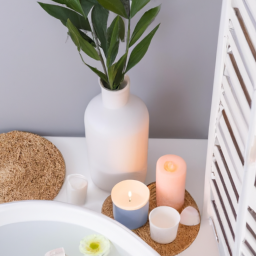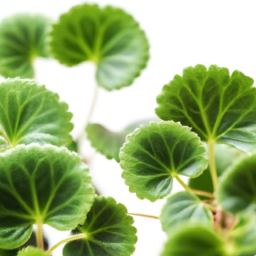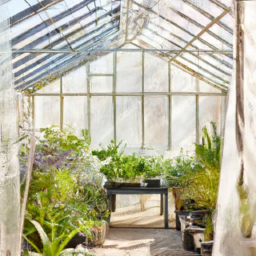
Have you ever dreamed of having your own greenhouse? A greenhouse is a wonderful addition to any garden or backyard, providing a controlled environment for growing plants year-round. Whether you’re a seasoned gardener or just starting out, a greenhouse can help you extend your growing season, protect your plants from harsh weather conditions, and create a beautiful space for relaxation and enjoyment. In this blog post, we’ll explore the benefits of having a greenhouse, different types of greenhouses available, and tips for setting up and maintaining your own greenhouse. So, let’s dive in and learn more about the wonderful world of greenhouse gardening!
Benefits of Using a Greenhouse for Plant Growth
Greenhouses are a valuable tool for any gardener looking to extend their growing season and create the ideal environment for their plants to thrive. In this article, we will explore the numerous benefits of using a greenhouse for plant growth.
Extended Growing Season
One of the primary benefits of using a greenhouse is the ability to extend the growing season. By creating a controlled environment, you can start your plants earlier in the spring and continue growing them later into the fall. This means you can enjoy fresh produce for a longer period of time and even grow plants that may not typically thrive in your climate.
Additionally, a greenhouse provides protection from harsh weather conditions such as frost, wind, and excessive rain. This can help prevent damage to your plants and ensure a higher success rate for your crops.
Overall, an extended growing season allows you to maximize your garden’s productivity and enjoy a wider variety of plants throughout the year.
Optimal Growing Conditions
Another benefit of using a greenhouse is the ability to create optimal growing conditions for your plants. By controlling factors such as temperature, humidity, and light levels, you can provide the perfect environment for your plants to thrive.
For example, you can adjust the temperature inside the greenhouse to mimic the ideal conditions for specific plants. This can help promote faster growth, increase yields, and improve the overall health of your plants.
Furthermore, a greenhouse can protect your plants from pests and diseases that may be present in your garden. This can help prevent infestations and reduce the need for chemical pesticides, leading to healthier and more sustainable gardening practices.
Space Efficiency
Using a greenhouse allows you to maximize your growing space and make the most of your available land. By utilizing vertical growing techniques and compact plant arrangements, you can grow a larger quantity of plants in a smaller area.
Additionally, a greenhouse provides a dedicated space for gardening activities, allowing you to organize your plants more efficiently and work comfortably in any weather conditions. This can help streamline your gardening process and make it easier to care for your plants on a regular basis.
Overall, the space efficiency of a greenhouse can help you make the most of your gardening efforts and achieve higher yields in a limited amount of space.
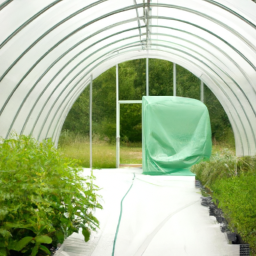
Types of Greenhouse Structures for Gardening
Overview
When it comes to gardening, having a greenhouse can be a game-changer. Greenhouses provide a controlled environment for plants to thrive, allowing you to extend the growing season and grow a wider variety of plants. There are several types of greenhouse structures to choose from, each with its own advantages and disadvantages. In this guide, we will explore the different types of greenhouse structures and help you determine which one is right for your gardening needs.
Types of Greenhouse Structures
1. Lean-to Greenhouses
Lean-to greenhouses are attached to an existing structure, such as a house or garage. They are a great option for gardeners with limited space or those looking to save on construction costs. Lean-to greenhouses are typically smaller in size and can be easily integrated into your existing outdoor space. However, they may receive less sunlight than freestanding greenhouses, so it’s important to choose a location that gets plenty of sun.
2. Freestanding Greenhouses
Freestanding greenhouses are standalone structures that are not attached to any other building. They come in a variety of shapes and sizes, from small hobby greenhouses to large commercial operations. Freestanding greenhouses offer more flexibility in terms of placement and design, allowing you to create a custom growing space that meets your specific needs. However, they can be more expensive to build and may require more space in your yard or garden.
3. Hoop Houses
Hoop houses, also known as polytunnels, are simple greenhouse structures made of a series of hoops covered in plastic or polyethylene film. They are easy to assemble and are a cost-effective option for gardeners on a budget. Hoop houses are great for extending the growing season and protecting plants from harsh weather conditions. However, they may not be as durable as other types of greenhouse structures and may need to be replaced more frequently.
Choosing the Right Greenhouse Structure
When deciding on the right greenhouse structure for your gardening needs, there are several factors to consider. Think about the size of your space, the amount of sunlight it receives, and your budget. Consider how you plan to use the greenhouse and what types of plants you want to grow. Lean-to greenhouses are a good option for small spaces or beginners, while freestanding greenhouses offer more flexibility and customization. Hoop houses are a budget-friendly option for extending the growing season.
In conclusion, the type of greenhouse structure you choose will depend on your specific gardening needs and preferences. Whether you opt for a lean-to greenhouse, freestanding greenhouse, or hoop house, having a greenhouse can help you take your gardening to the next level. With a controlled environment, you can grow a wider variety of plants, extend the growing season, and protect your plants from harsh weather conditions. Choose the greenhouse structure that best suits your needs and start enjoying the benefits of greenhouse gardening today.
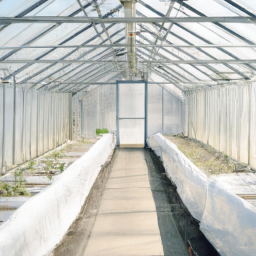
Tips for Maintaining a Healthy Environment in Your Greenhouse
Introduction
When it comes to maintaining a healthy environment in your greenhouse, there are several key factors to consider. From controlling temperature and humidity to preventing pests and diseases, there are many steps you can take to ensure your plants thrive. In this guide, we will discuss some essential tips for keeping your greenhouse in top condition.
Controlling Temperature and Humidity
One of the most critical factors in maintaining a healthy environment in your greenhouse is controlling temperature and humidity levels. Most plants thrive in temperatures between 65-75 degrees Fahrenheit during the day and slightly cooler at night. To achieve this, you may need to invest in a heater for colder months and a fan or ventilation system for warmer months.
In addition to temperature, humidity levels are also crucial for plant growth. Most plants prefer humidity levels between 50-70%. To maintain the proper humidity levels in your greenhouse, you can use a humidifier or misting system. It’s also essential to monitor the humidity levels regularly and adjust as needed to prevent mold and mildew growth.
Another essential aspect of controlling temperature and humidity is proper insulation. Make sure your greenhouse is well-insulated to retain heat in the winter and keep cool in the summer. Insulating your greenhouse can help you save on energy costs and create a more stable environment for your plants.
Preventing Pests and Diseases
Pests and diseases can quickly spread in a greenhouse environment, so it’s essential to take preventative measures to keep your plants healthy. One of the best ways to prevent pests and diseases is to practice good sanitation habits. Clean up any fallen leaves or debris regularly, as these can attract pests and harbor diseases.
Another effective method for preventing pests and diseases is to inspect your plants regularly for any signs of infestation or illness. Look for yellowing leaves, holes in the leaves, or any unusual spots or growths. If you notice any issues, remove the affected plants immediately to prevent the spread of pests or diseases.
In addition to sanitation and regular inspections, you can also use natural pest control methods such as introducing beneficial insects or using organic pesticides. These methods can help keep pests at bay without harming your plants or the environment.
Proper Watering and Fertilization
Proper watering and fertilization are essential for maintaining a healthy environment in your greenhouse. Overwatering can lead to root rot and other issues, while under-watering can cause wilting and stunted growth. It’s essential to water your plants consistently and monitor the soil moisture levels to ensure they are getting the right amount of water.
In addition to watering, fertilization is also crucial for plant growth. Make sure to use a balanced fertilizer that contains essential nutrients such as nitrogen, phosphorus, and potassium. It’s essential to follow the instructions on the fertilizer package and avoid over-fertilizing, as this can harm your plants.
When fertilizing your plants, it’s also essential to consider the type of plants you are growing. Some plants may require more frequent fertilization, while others may need less. It’s essential to research the specific needs of your plants and adjust your fertilization schedule accordingly.
In conclusion, maintaining a healthy environment in your greenhouse requires careful attention to temperature, humidity, pest control, watering, and fertilization. By following these tips and staying vigilant, you can create an ideal environment for your plants to thrive and flourish.
In Summary
So, you’re thinking about starting your own greenhouse, huh? Well, let me tell you, it’s a fantastic idea! A greenhouse is a structure made of glass or plastic that allows sunlight to enter and creates a warm, controlled environment for plants to grow. It’s like a little slice of paradise for your veggies, flowers, and herbs.
With a greenhouse, you can extend your growing season, protect your plants from harsh weather conditions, and even grow exotic plants that wouldn’t survive in your climate otherwise. Plus, it’s a great way to get your hands dirty and enjoy the therapeutic benefits of gardening. Whether you’re a seasoned pro or a newbie with a green thumb, a greenhouse is a wonderful addition to any garden. So, what are you waiting for? Get your hands on some seeds, roll up your sleeves, and start building your own little oasis!
Your Burning Questions Answered:
Q1. What is a greenhouse?
A greenhouse is a structure made of transparent material, such as glass or plastic, that allows sunlight to enter and trap heat inside. This creates a warm and controlled environment ideal for growing plants.
Q2. What are the benefits of having a greenhouse?
Having a greenhouse allows you to extend the growing season, protect plants from harsh weather conditions, and control the temperature and humidity levels for optimal plant growth. It also provides a space for starting seeds, growing exotic plants, and enjoying gardening year-round.
Q3. What types of plants can be grown in a greenhouse?
A wide variety of plants can be grown in a greenhouse, including vegetables, herbs, flowers, fruits, and even tropical plants that require a warmer climate. With the right conditions, you can grow almost any plant in a greenhouse.
Q4. How do I maintain a greenhouse?
To maintain a greenhouse, you will need to regularly monitor and control the temperature, humidity, ventilation, and watering. It’s also important to keep the structure clean, repair any damages, and regularly inspect for pests and diseases.
Q5. Can I build my own greenhouse?
Yes, you can build your own greenhouse using DIY kits, plans, or materials purchased from a garden center or hardware store. There are also many resources available online to help guide you through the process of building and maintaining a greenhouse.
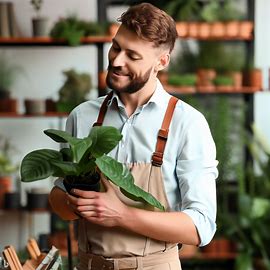
Alex Turner is a sustainable gardening advocate and the founder of an acclaimed indoor gardening blog. With a focus on eco-friendly practices and urban sustainability, Alex combines his background in environmental studies with his love for plants to educate readers on mindful indoor gardening. His work highlights the importance of nurturing both plants and the planet.

